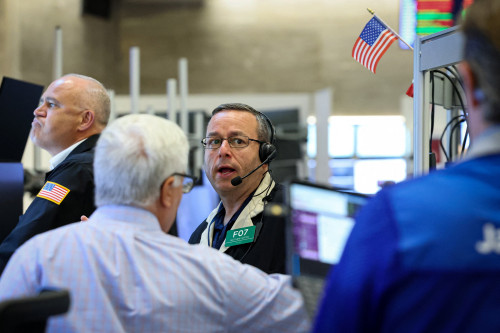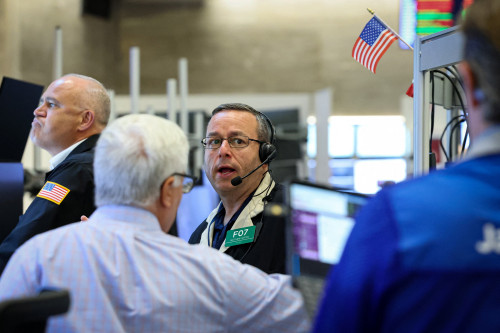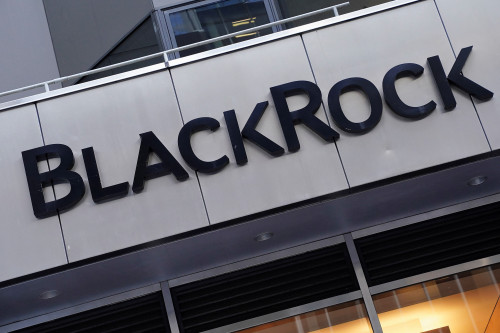
By Johann M Cherian, Sanchayaita Roy and Saeed Azhar
(Reuters) -Wall Street’s main indexes advanced on Tuesday, with the S&P 500 and the Nasdaq hitting record highs, as news that July inflation rose broadly in line with expectations bolstered bets on a Federal Reserve interest rate cut next month.
The Labor Department said the Consumer Price Index (CPI) rose 0.2% on a monthly basis in July, while annual inflation came in slightly below forecasts, drawing calls from U.S. President Donald Trump to lower interest rates.
Yields on shorter-dated Treasury bonds – a reflection of interest rate expectations – slipped and rate futures showed traders are giving an 88.8% chance that the Fed could lower rates by about 25 basis points in September.
“The CPI data is supportive for equities overall, getting some good news with the Fed looking more on track to cut in September and potentially more transitory inflation,” said Katherine Bordlemay, co-head of client portfolio management, fundamental equities at Goldman Sachs Asset Management.
“The first thing I’d guide is continue to lean into the theme of the big are getting bigger. We continue to have conviction around mega-tech and technology.”
Alphabet rose 1.3% as Perplexity made a $34.5 billion cash offer to buy the company’s Chrome browser.
Intel Corp climbed 4% after Trump said he met its CEO, Lip-Bu Tan, on Monday, praising Tan and calling the meeting “very interesting.”
Last week, Trump had demanded Tan’s immediate resignation, calling him “highly conflicted” over his ties to Chinese firms.
At 2:03 p.m. ET, the Dow Jones Industrial Average rose 509.74 points, or 1.16%, to 44,485.32. The S&P 500 gained 66.78 points, or 1.05%, at 6,440.23 and the Nasdaq Composite climbed 268.51 points, or 1.26%, to 21,653.92.
The quality of economic data remains a concern weeks after Trump fired the head of the Bureau of Labor Statistics following downward revisions to previous months’ nonfarm payrolls counts. Markets are monitoring developments around Trump’s nominee, E.J. Antoni, to the bureau commissioner post and potential candidates for the Fed’s top job.
“This is still early innings of this process and just as the Fed will be beginning to cut rates in the autumn, that’s when the inflation data will probably start to be registering some of these more direct tariff price increases and it’s going to complicate the rate-cutting decision,” said John Velis, a macro strategist at BNY.
Relief came as the U.S. and China extended their tariff truce until November 10, staving off triple-digit duties on each other’s goods.
U.S. stocks have rallied in recent weeks, putting the benchmark S&P 500 on track for its first record high close in nearly two weeks, on the back of strong tech earnings, easing trade tensions, and increased rate cut expectations.
Inflows into U.S. stocks last week were the largest in two years, BofA Global Research data showed.
The Russell 2000 index, tracking small-cap companies, also advanced 2.4% to hit a two-week high.
An index tracking airline stocks surged 8%, putting it on track for its biggest one-day rise in over a month after data showed airfares rose 4% in July.
Bank stocks rallied, with the S&P 500 Banks index up 2.2%, as analysts said a steepening of the yield curve could help bank earnings as lenders could borrow cheap and lend at a higher rate.
Cardinal Health dropped 7.7% after the drug distributor said it will buy healthcare management firm Solaris for $1.9 billion.
Advancing issues outnumbered decliners by a 3.71-to-1 ratio on the NYSE. There were 377 new highs and 53 new lows on the NYSE.
On the Nasdaq, advancing issues outnumbered decliners by a 2.37-to-1 ratio.
The S&P 500 posted 23 new 52-week highs and 11 new lows while the Nasdaq Composite recorded 89 new highs and 83 new lows.
(Reporting by Johann M Cherian, Sanchayaita Roy and Purvi Agarwal in Bengaluru and Saeed Azhar in New York; Editing by Arun Koyyur, Maju Samuel and Richard Chang)




